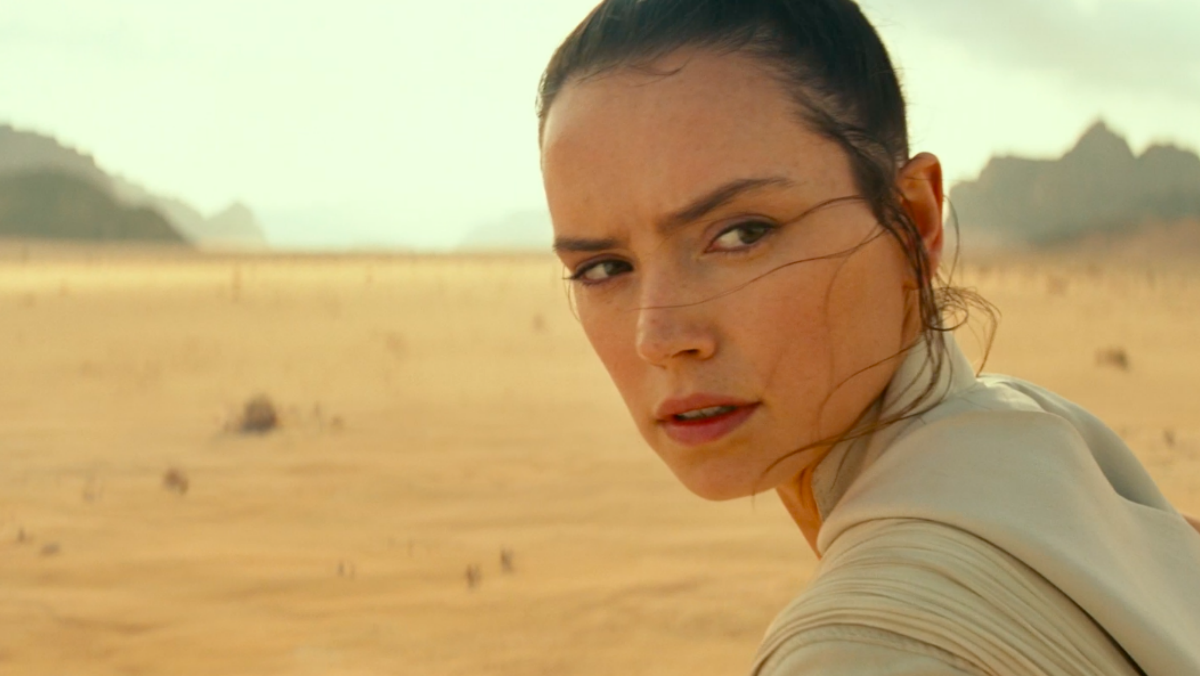The hero’s journey archetype has long defined many of the stories that we see on the big screen. The centuries old structure is most succinctly described by professor and author Joseph Campbell as “a hero ventures forth from the world of common day into a region of supernatural wonder: fabulous forces are there encountered and a decisive victory is won: the hero comes back from this mysterious adventure with the power to bestow boons on his fellow man.” The fact that this pattern has shaped so many of the properties that we know and love means that we shouldn’t be entirely surprised when we see similarities between those stories.
Despite the fact that Hollywood has long been channelling the hero’s journey and repurposing the archetypes and tropes that it introduced, during The Rise of Skywalker we noticed that the ninth entry into the Star Wars franchise has some particularly big Harry Potter energy. Like, it could actually be a Harry Potter movie energy. The dust from the release has briefly settled, but whilst the takes are still piping hot, we thought we’d look into all the Harry Potter parallels that J.J. Abrams and co. (unintentionally?) built into the last Skywalker Saga movie.

Warner Bros.
Let’s start with Rey. Just like Luke and Anakin before her, she’s The Chosen One. It’s a common hero’s journey trope that has always been central to pretty much every blockbuster including all the Star Wars trilogies. Here, though, Rey assumed a particularly Potterish role. She attempts to take on the villains alone, without the help of the friends that she desperately needed and who desperately needed her. The fact that she became a part of a prophecy that saw two young people placed at its center, with either possibly becoming the Chosen One. Even her journey is defined by the lies of those around her, Luke and Leia become analogs for Dumbledore and his choice to never tell Harry that he was a Horcrux who would have to die to kill Voldemort. Both Luke and Leia are revealed to know of Rey’s heritage and yet neither told her.
Speaking of that sacrifice, both Rey and Harry end up dying and being resurrected at the end of their stories. Though Harry’s resurrection is a choice and Rey is brought back by another, it was another moment that immediately made us draw comparisons, especially as both those key moments were prefaced with a battle against a wrinkled, hooded immortal who was only defeated when the spirits of the young heroes’ loved ones appear to support them. Speaking of those loved ones, Rey also shares her orphan status with Harry, as well as her unhappy childhood in the hands of an uncaring and cruel caretaker who uses her for labor. It’s only when Rey meets Finn and becomes part of the Resistance that she truly discovers her powers, though she’s had an inkling before. Just like Harry and his admittance to Hogwarts.

Disney/Lucasfilm
Another similarity that Star Wars and Harry Potter share is that the worlds that take in both Rey and Harry are controlled by an elite, secretive, and powerful group who define their powers and how they should be used. Though The Last Jedi attempted to subvert that, The Rise of the Skywalker firmly returns to the legacy, bloodlines, and fate, which are also key to the Harry Potter lore. That decision is probably why this particular Star Wars film feels so much like a late stage Harry Potter movie. Rey even literally talks to a serpent; perhaps this is a tool to show the audience that she may have Dark Side powers, just like Harry and his skill at Parseltongue.
It’s not just Rey’s journey that had us thinking of the Boy Who Lived, though. Kylo Ren has long been Rey’s antagonist, confidante, and potential ally, but it was this movie that revealed he was part of what the film called a Force Dyad. It’s a phenomenon where two people come together and become even stronger with the force. As we mentioned earlier, Harry Potter has his own strange dual prophecy, one that features another Chosen One—just like the Force Dyad—and that offers up two heroes instead of one. After all, Neville Longbottom, who could have been the Boy Who Lived, is the one who strikes down the final Horcrux and allows Voldermort to be defeated, just like Kylo coming to Rey’s aid when she’s facing down against Palpatine.

It’s not just the thematic elements and recognizable tropes. The film actually shares some visual similarities with the Harry Potter series. When The Rise of Skywalker’s group of brave heroes are sucked into the sand pits of Pasana, there’s a distinct echo of the Devil’s Snare sequence from the end of the first film where the kids fall through the deadly vines only to end up on a lower level of the school. There is also, of course, Rey’s final fight with Palpatine that looks incredibly similar to many of Voldermort and Harry’s showdowns as the pair’s two forms of good and evil magic join in some kind of fiery electric tube as the powerful beings battle.
The cyclical and never ending nature of pop culture means that the things that once influenced the art that we watch will in turn end up being influenced by the things that they once influenced. In this ouroborus of life and art it’s not surprising that these huge franchises have finally collided in a Venn diagram of who did it first. But it is a little disappointing that the final entry into the Skywalker Saga couldn’t have been distinctive enough for us to not have been haunted by the ghost of J.K. Rowling’s ever-present (and ever dated) blockbuster series.
Header Image: Warner Bros. and Disney/Lucasfilm